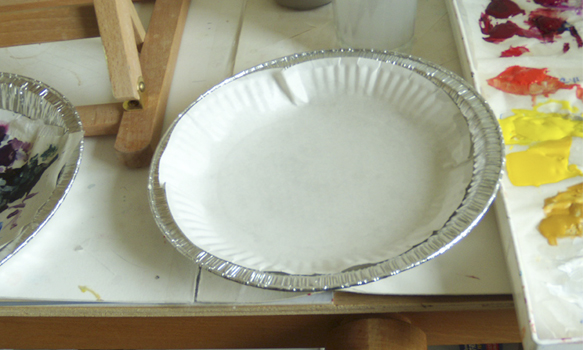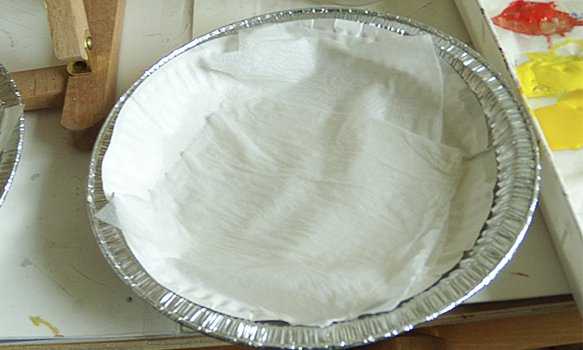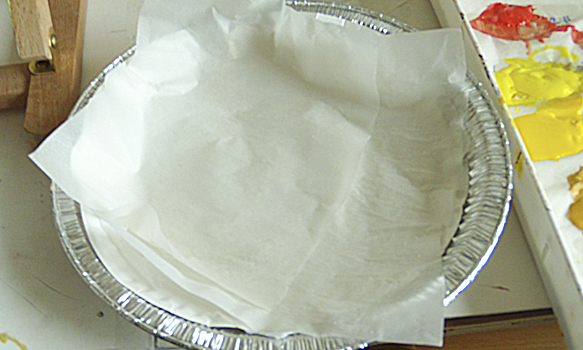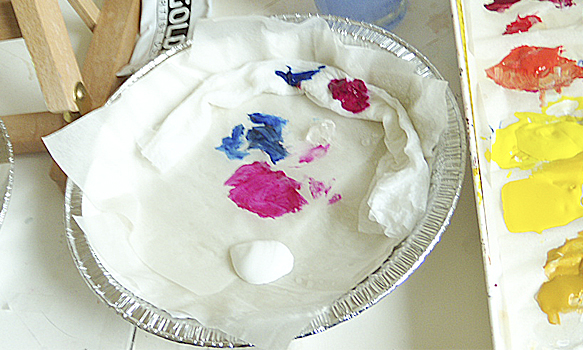The Post Consumer Palette
mouse over images for captions
If you follow this blog, then you have read about my temporary diminutive workspace, and how I have embraced a new and efficient way of working. It does have it’s challenges however.
One day, while sitting at my ‘easel slash worktable’, juggling brushes, an acrylics palette, a small painting propped on an equally small tabletop easel, paint rags, water jugs for rinsing my brushes, and little scraps of cardboard used for mixing trays, I had a vision. I could construct stack-able mixing palettes out of post consumer, or soon to be recycled, products.
I will be the first to admit the space dictated the idea. In my former studio, I would just grab another of my many lidded plastic palettes for mixing. But not only are these currently residing in a storage unit, there would be limited table space to accommodate them.
However in my kitchen pantry, I did have 3 post consumer aluminum pie plates made from recycled aluminum. I bought these simply because they take up less room in my current apartment storage space than my glass pie plates. They stack very tightly together and are reusable.
The recipe for the palette:
1 post consumer aluminum pie plate
1 post consumer paper plate
post consumer paper towels
And I add little parchment scraps that I should throw away after cutting out pieces of parchment for baking in round forms. But I never do. Rather, I use these square scraps as surfaces for assembling small cardboard sculpture because glue does not stick to them, and I can have several components setting up simultaneously. As an alternative to parchment, you could substitute a wax paper like Marcal which is post consumer, or Yupo, a synthetic paper for artists.
How to assemble:

Line the pie plate with the paper plate and folded paper towels. Spray this with water. This acts like a sponge and holds moisture to keep the mixing surface moist and hence your acrylics.

Lay the parchment directly on top of this, and pat it down to fit. I then lay a wet paper towel around the edge and squeeze any other paint I might use for color mixing directly onto this towel (see last photo). This way I don’t have to do all mixing on one palette, which can create a liquid muddy mix with acrylics.


For stacking, I stack with a stiff moistened paper in between, and place them in a used plastic grocery bag until the next day.
If you are space challenged and have limited table space for acrylic mixing palettes, and you don’t want to use just throw away paper plates, try these inexpensive palettes.



